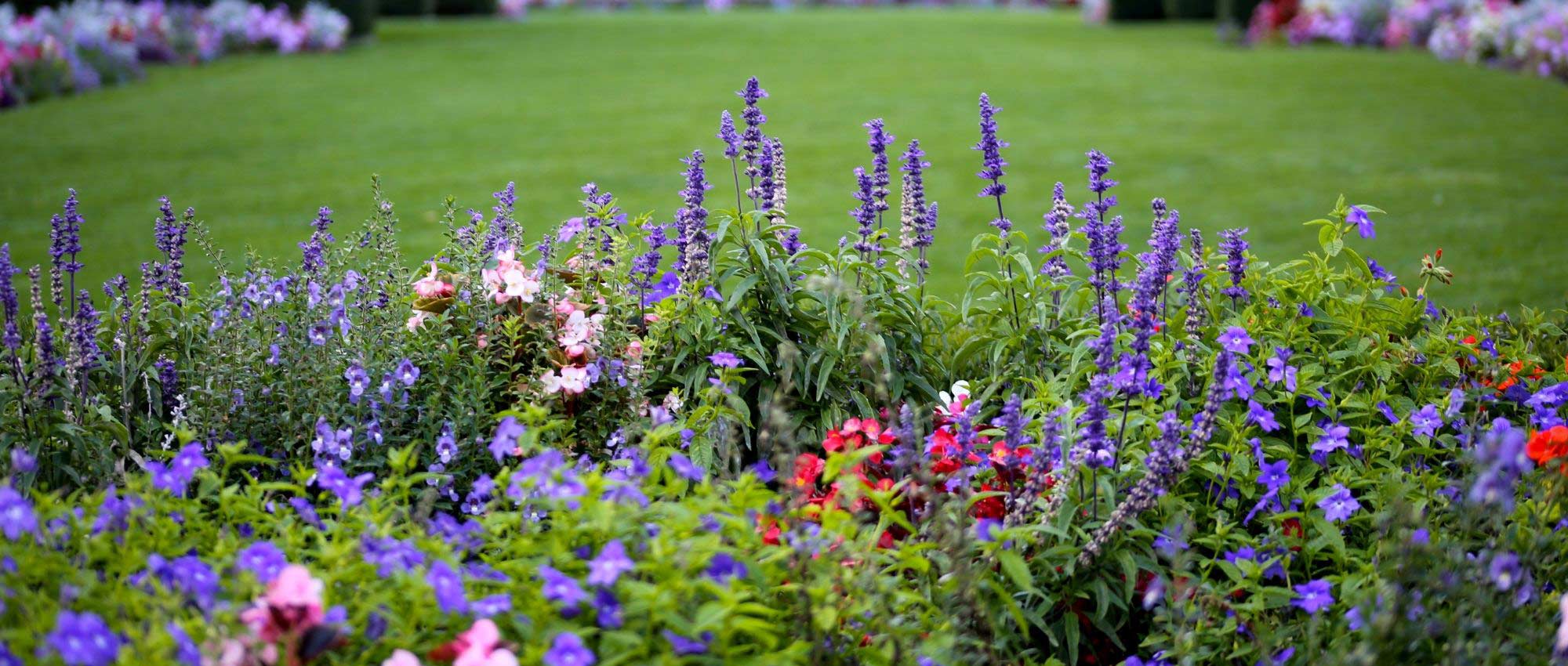
How to landscape an English garden?
The essentials
Contents
English garden charms with its natural, free and romantic atmosphere. It is a garden full of poetry conducive to daydreaming where a kingdom of opulence and freshness prevails. Notably, it features mixed borders where luxuriant vegetation thrives, a multitude of perennials that seem to spill out of the beds.
Unlike formal French gardens with geometric shapes, English garden has a much freer, more vibrant aspect. English garden lets you recreate a fairly natural landscape, with groves, streams, ponds, rockeries… as one might find in nature. Shapes are gentle, with sinuous paths, curves and undulations…
This creates a very restorative and calming atmosphere. However, although English garden imitates nature, it is in fact very structured. Even if it allows plants to express themselves fully in the borders, the garden is carefully managed, with clearly defined and well-maintained areas. Discover in this guide all our tips to create a superb English garden.
Draw inspiration from nature
Far from French formal gardens where nature seemed completely controlled, the idea of the English garden is to imitate nature and recreate landscapes that appear natural, although managed. Great importance is therefore given to ponds, water features, waterfalls, groves… The garden is designed to showcase them. Natural materials are chosen for landscaping: wood, stone, etc. The English garden also leaves plenty of room for biodiversity. Ponds or basins serve as refugium for many insects. Flowers, abundant in the flower beds, can create a meadow-like feel and attract pollinating insects that come to feed on their nectar. Nature is allowed to express itself instead of being dominated.
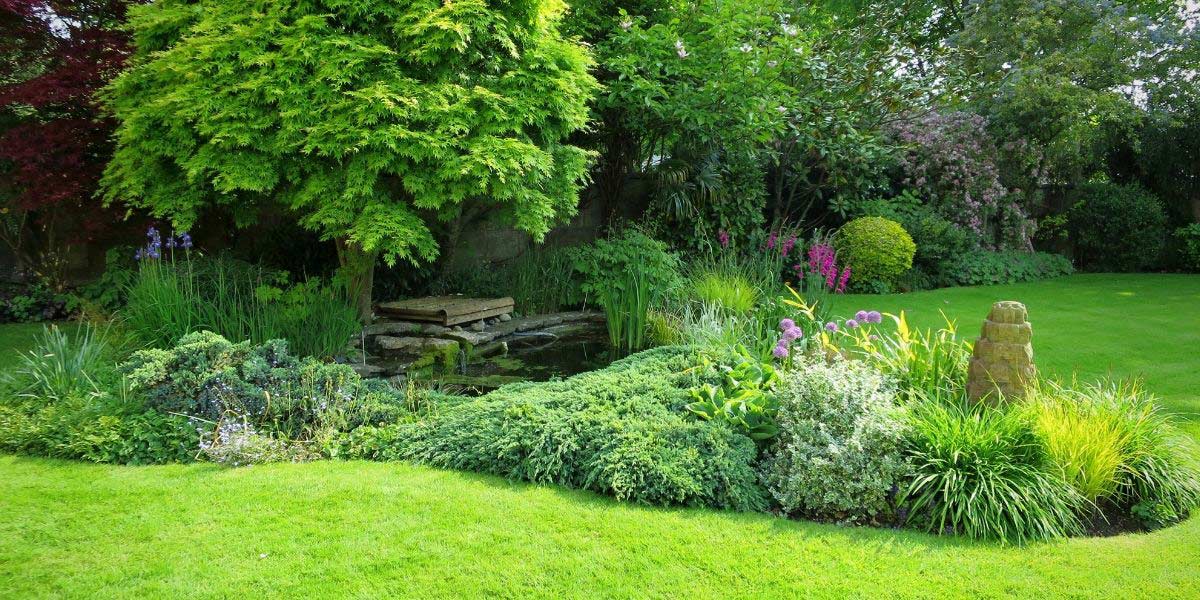
The English garden draws inspiration from nature and highlights ponds, water features, groves, leafy trees… Forms are soft, with many curves and undulations, even though there is a clear contrast between the flower beds and the short grass meadow
Read also
English garden: 10 emblematic plantsStructuring the space
To design your English garden, start by drawing a plan on paper and consider the best way to structure it. Feel free to consult Stéphanie’s article on our blog: “10 landscape designer tips for garden layout”
English gardens have a very free, natural and poetic feel. We recommend creating sinuate pathways that allow discovery of the garden’s different areas as you wander. Structure the garden with gentle curves and undulations; shape forms with softness! You can create slightly hidden spaces that are revealed around a bend in a path, ideal for seclusion and for adding a touch of mystery.
In English gardens, contrasts are also very important! For example, arrange natural areas (type naturalistic meadow) and mixed-borders where lush vegetation seems to overflow the border… these will contrast with a perfectly mown short grass meadow! You can also lay out a few straight paths to give structure to the garden. It is also interesting to create small pruned hedges to separate areas and highlight certain features.
You can create viewpoints, vistas and areas with open views. Create a focal point, for example a statue or a fountain, with a very straight path leading to it and overflowing flower borders either side! Likewise, if your garden has some low stone walls, aim to make them stand out, for example by drawing attention to them with flowers and borders. You can use these walls to form a frame, a straight line that opens onto a perspective.
Work to bring out natural elements such as water features, ponds and small groves, for example by directing pathways towards them… If you have large leafy trees with elegant architecture, we also recommend showcasing them, for example by clearing space around them or by placing a bench facing them.
Similarly, it is interesting to create a few areas suited to relaxation, where you can install a bench or garden seating. Arrange small, secluded, tucked-away spots partly hidden by vegetation, perfect for recharging!
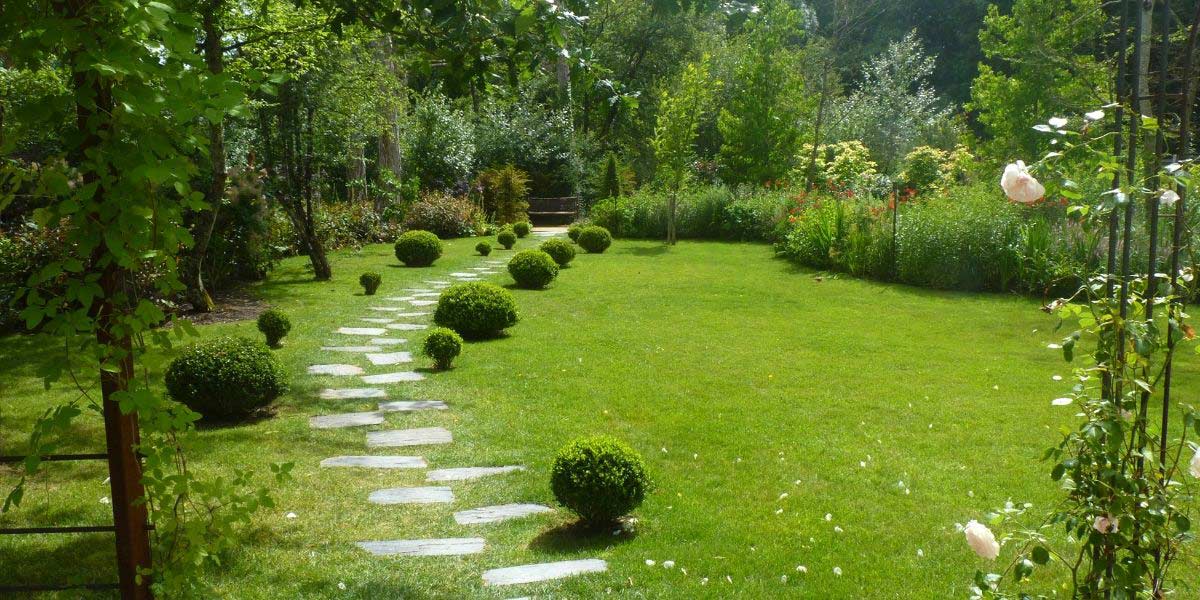
English garden in the park of Domaine de Chaumont-sur-Loire
Create lush mixed borders
Mixed borders are an essential feature of English gardens. These beds that combine many different perennial plants create a lush effect and a sense of plant abundance. Plants can spill onto paths, break up lines; they are hard to contain within the bed. We recommend installing mixed borders along main paths and walkways, at the edge of the short grass meadow. Plant perennials fairly close together, forget usual recommended planting distances. Aim to create density. Preferably place tallest plants at the back of the bed, and slightly shorter ones in front, but don’t hesitate from time to time to break the rules and place some tall perennials at the front of beds. A mixed border should have a luxuriant feel, with opulent foliage and, above all, a great diversity of flowers.
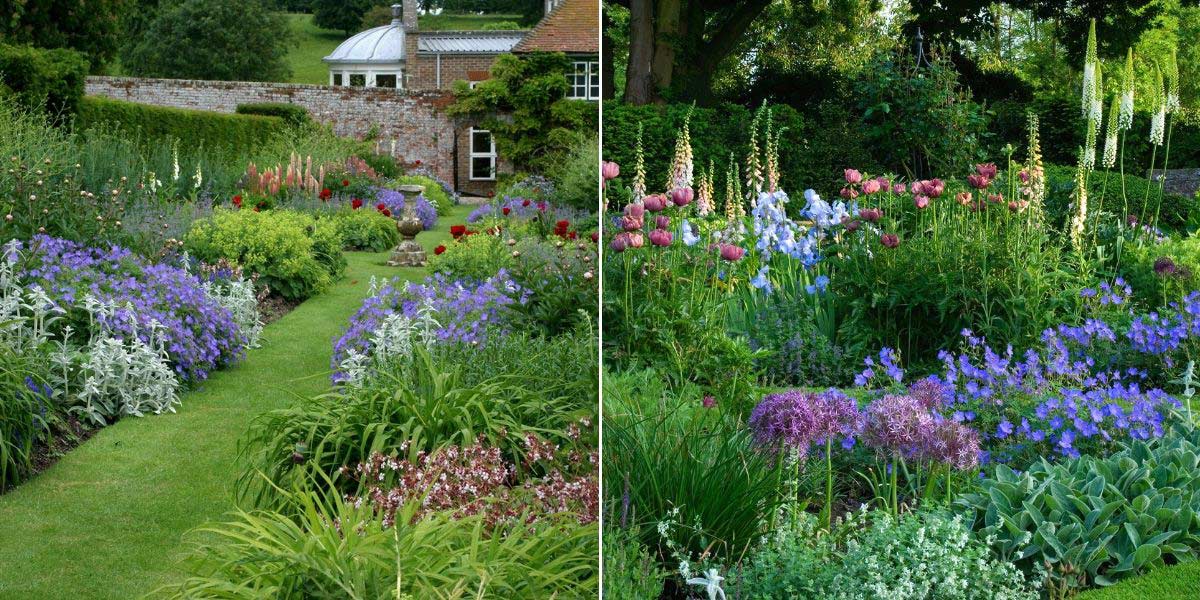
Mixed borders made up of many perennials (photo Stuart Logan) / Scene with Allium christophii, Geranium ‘Johnson’s Blue’, Stachys, Iris, poppies, Digitalis ‘Suttons Apricot’ (photo Clive Nichols – MAP – Garden The Old Rectory Hasselbech Northamptonshire)
→ Find our full guide to the mixed border
A selection of soft colours
In classic English gardens, pastel shades are usually favoured… Choose, for example, flowers in light pink, blue, mauve or white. These colours are both soothing and romantic, conducive to daydreaming. They create a soft, airy atmosphere that is not overpowering. You can also choose flowers in vintage shades: orange, salmon, light pink, pale yellow, brown, purple… Soft tones that will add a lot of style to your garden. Green also plays a dominant role, with plants with generous foliage, ferns, hostas and fine leafy trees. Nevertheless, despite these tendencies, let creativity and personal preferences guide you!
However, it is also possible to choose brighter, more colourful shades. You can also play with contrasts by pairing colours that seem opposed, for example blue and orange, to create an impressive visual effect.
Rich plant palette
Roses occupy an important place in English gardens. Feel free to plant them, whether bush roses that you can integrate into a border, or climbing varieties to train over an arbour, for example. Roses add softness and romance, and their fragrance is much appreciated!
Climbing plants are ideal too. Choose, for example, clematis, wisteria, climbing roses, or common jasmine, and train them up an arch, an arbour, or a pergola…
Perennials have their place in mixed borders. They remain in place for several years, limiting maintenance. Opt, for example, for hardy geraniums, delphiniums, campanulas, Phlox paniculata… Enjoy charm of Oriental poppies or graphic impact of alliums. Also consider decorative foliage of ferns and hostas, which will bring lovely green tones and better showcase the flowering.
Finally, ornamental grasses are ideal for adding volume and lightness to borders! They will contrast beautifully with a well-mown short grass meadow or stricter straight lines.
In general, choose plants with light, airy flowering (Gypsophila, campanulas, foxgloves…). It is interesting to create effects of transparency, to allow the eye to pass through the flowering. Likewise, for trees and bushes, we recommend pruning for transparency to highlight their architecture and give them a more open silhouette.
For more ideas and inspiration on plants you can include, discover our advice sheet : “English garden : 10 iconic plants”
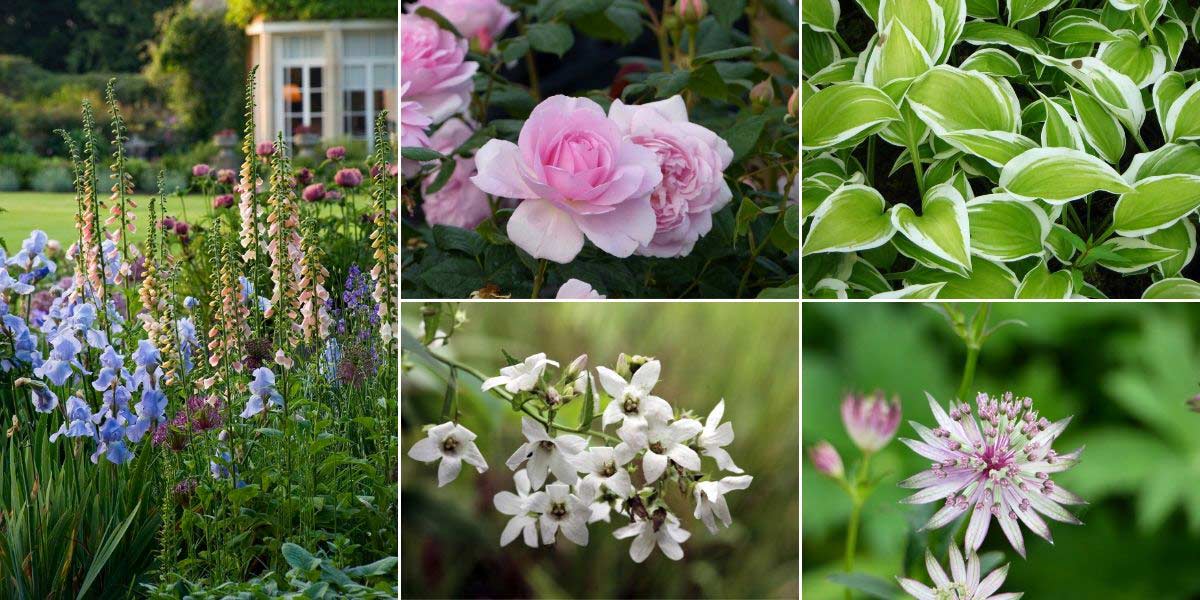
Scene with borders of Iris ‘Jane Phillips’, foxgloves ‘Suttons Apricot’ and Papaver orientale ‘Patty’s Plum’ (photo Clive Nichols – MAP) / David Austin rose ‘The Ancient Mariner’ / Hosta ‘Emily Dickinson’ / Campanula lactiflora ‘Alba’ / Astrantia major ‘Ruby Star’
Adding furniture and decorative elements
Feel free to add a little furniture and decorative items. You can set up a small garden seating area or place a bench in a secluded corner of the garden to create an intimate, restorative space. They will help you feel particularly at ease in the garden and will invite you to sit down and enjoy flowering! You can also position them facing a vista, a majestic tree or an impressive view. You can also install arches or arbors to train climbing plants (clematis, climbing roses…). They will bring height and plenty of romance! Preferably choose materials such as wrought iron, stone or wood to keep a very natural feel.
→ Discover landscaping ideas in Wrought iron in the garden: ideas and inspiration and Wood in the garden: ideas and inspiration
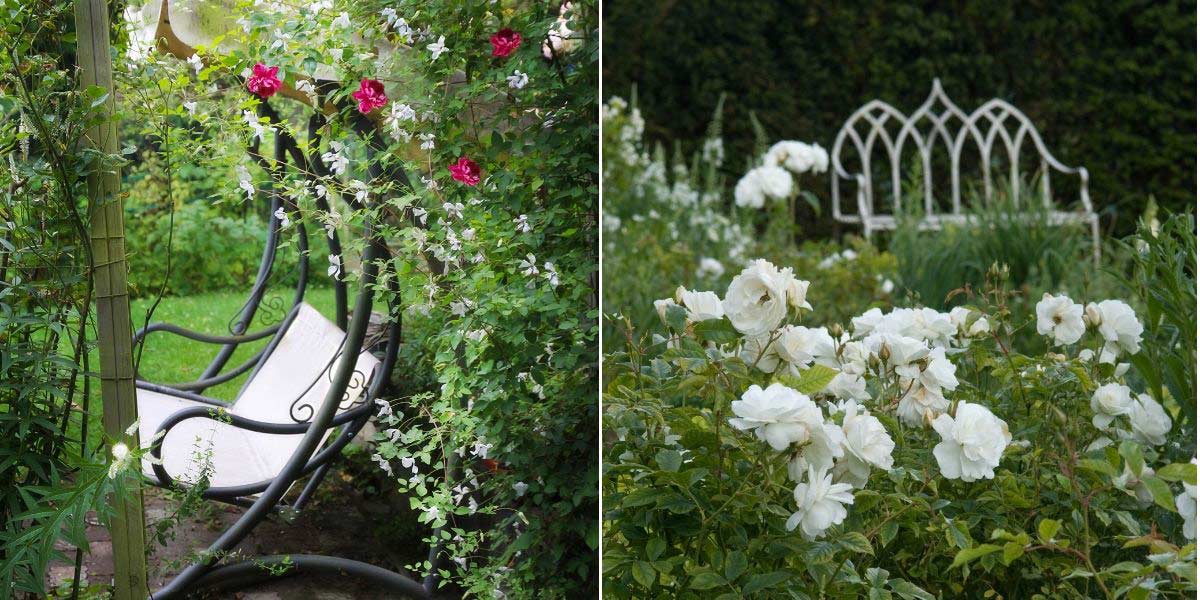
A bench or garden seating area invites you to sit and enjoy the garden
Spotlight on the Cottage Garden
Cottage Garden is a style of English garden that developed from the end of the 19th century. It is often a small enclosed garden, situated in front of a beautiful country house, for example a timber-framed house with culm roof, of warm, single and refined style. Cottage Garden is also ideal for enhancing an old stone house. It is a very green and natural garden, with a profusion of flowers, often accompanied by edible plants (vegetables, aromatic herbs, fruit trees…). It is home to climbing plants, roses, foxgloves, edible flowers, lupins, hollyhocks, delphiniums… All these plants give an impression of clutter and disorder. It is also interesting to incorporate some vintage-style decorative elements (wrought-iron objects, old barrels, recycled and refurbished items…).
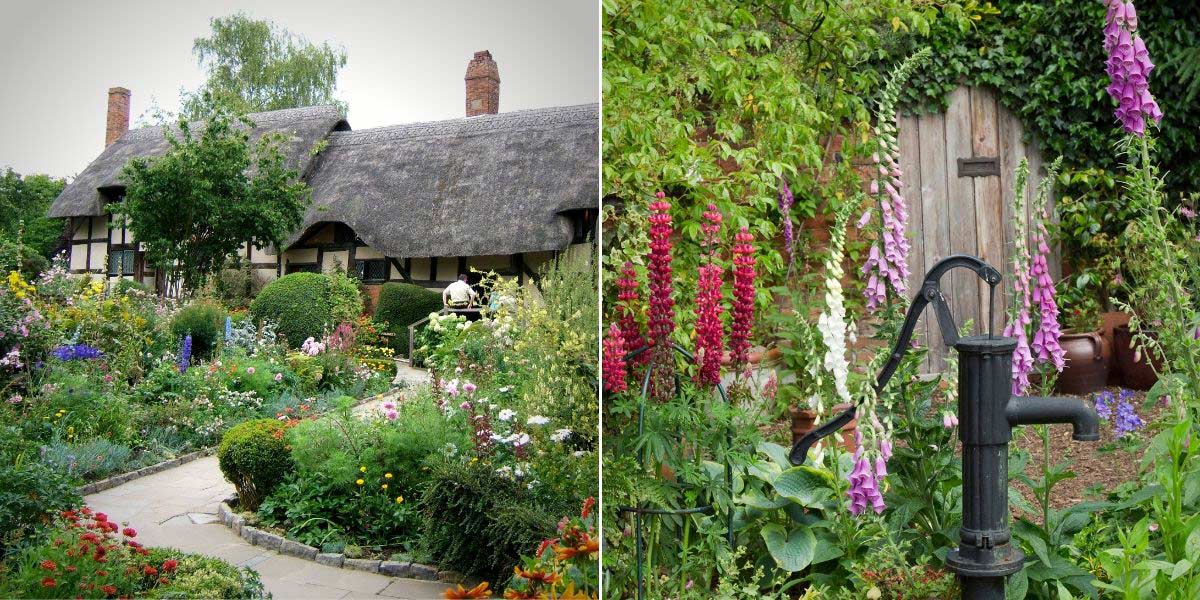
A cottage garden (photo Richard Peat) / Scene with foxgloves, lupins and geraniums ‘Claridge Druce’ (photo Ron Evan – GWI Garden World Images – Biosphoto)
- Subscribe!
- Contents
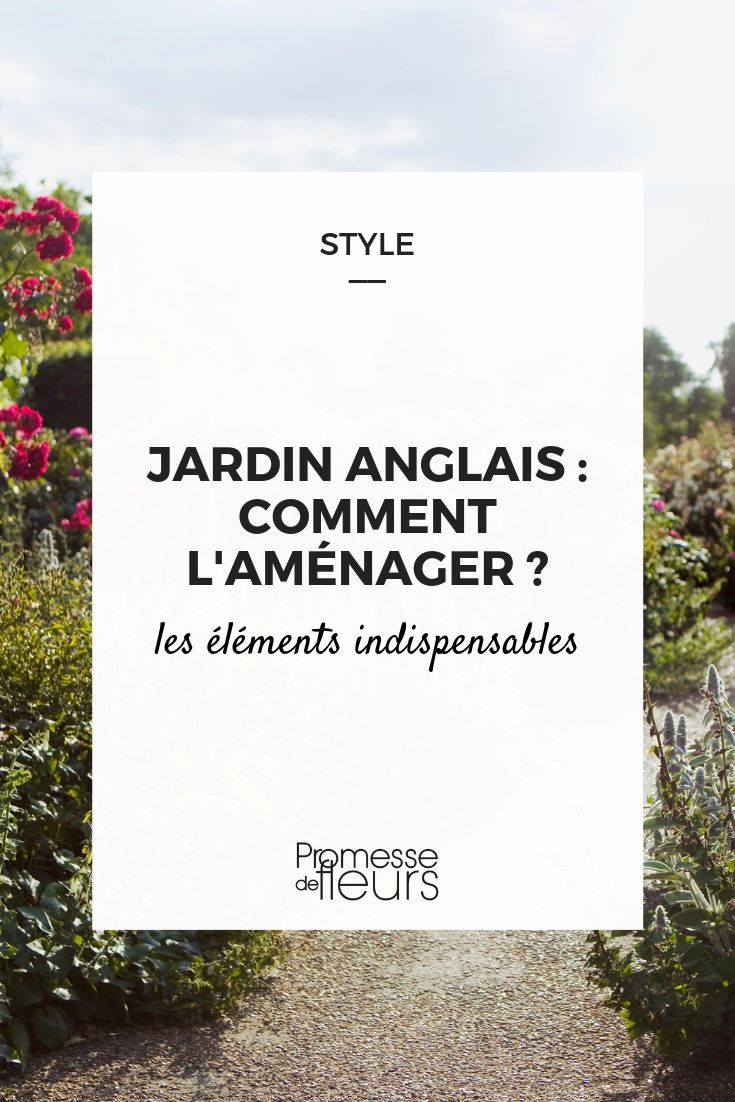































Comments